#and! also love pipevine swallowtail butterflies!
Text
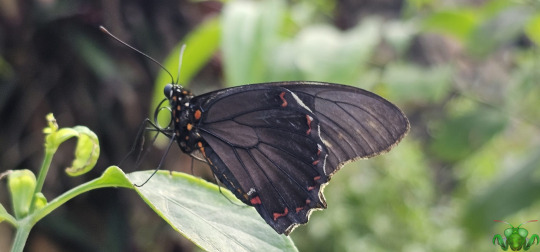
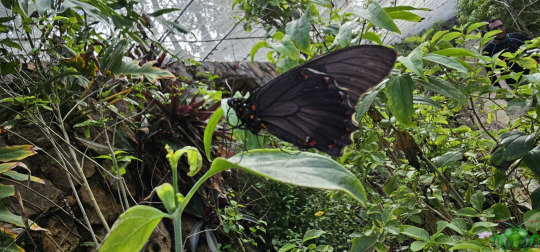

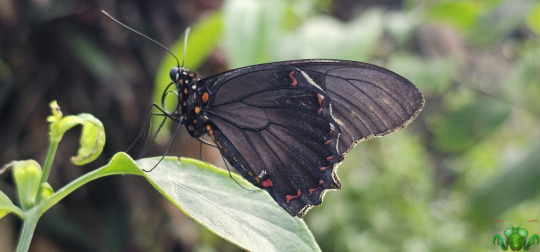
Polydamas Swallowtail Butterfly - Battus polydamas
Though lovely this dark-winged Butterfly is, I'd have loved to see the dorsal side of its wings. Nevertheless, I won't complain too much given these pictures come from a long way from home and from a dear friend who has given us a glimpse to some tropical insects. This dazzling specie features pronounced veins and prominent red markings along the edge of the underside of the hindwing. The forewing features a yellow band that rides along the wing (but not to the edge) both above and below. It's similar to the band of the male Eastern Black Swallowtail but positioned lower on the wing and less steep in shape. The band appears somewhat faded on the underwing, hence why I would have liked to see the dorsal side. The Butterfly's body itself can be easily recognized from the coat of orange-red dots it wears and a similarly colored stripe running along the abdomen (which is partially visible in Pictures 1 and 4). With all these observations in mind, similar to the aforementioned Eastern Black Swallowtail, this specie may be mistaken at a passing glance with the Pipevine Swallowtail (a close relative: Battus philenor). Red spots or white spots, only a landing will tell, as the Pipevine has a royal blue shroud atop its wing scales (if male). Based on location, this individual is likely of the western group (subspecie B. polydamas polydamas), but there are many subspecies in the Central America range so I can't be sure.
It truly is a beautiful insect, and it maintains those stunning colors all throughout its entire development from Caterpillar to Butterfly. From the images I've research Polydamas Caterpillars are plump and dark (dark brown to black range) with a coat of orange spikes along their body and two long protrusions near their head. Such an appearance not only looks fearsome, but can also lead them to be mistaken for B. philenor Caterpillars. From the images I've looked at for comparison, the Polydamas Caterpillars are far more elaborate in appearance. However, when metamorphosed into Butterfly, there is one thing that is sure not to be missed on this specie...or missed, actually as the case may be. Contrary to some of its more popular relatives, this insect is also known as the Tailless Swallowtail! Unlike the handful of Swallowtails* that have graced this blog, there is a complete absence of hindwing tail, and appears to be the only specie in North America to feature tail absence. While these tails are beautiful to observe, it was enlightening to learn just how large the Papilionidae family was and how many Swallowtails actually lack tails. For example, the Palawan Birdwing (Trogonoptera trojana) is a Swallowtail (Birdwing), and though magnificent in size and iridescence, it too lacks tails. That's just the way the wings form within some branches of Lepidoptera.
*Note: As a Swallowtail, you can actually see all 6 legs active and strong, compared to the 4 active legs of the previous two tropical Brush-Footed Butterflies.
Pictures were taken on February 11, 2024 in Mexico with a Samsung Galaxy S23 Ultra.
#jonny’s insect catalogue#butterfly#polydamas swallowtail#tailless swallowtail#swallowtail butterfly#lepidoptera#insect#mexico#february2024#2024#nature#entomology#invertebrates
13 notes
·
View notes
Text
Big Bug Appreciation Post! (1/2)
For anyone who’s been on my blog, or has interacted with me, it’s no surprise I’m a bug enthusiast. But I don’t think I’ve ever made an official bug appreciation post, and there are a lot of bugs in my state that I think are super neat, so I wanted to briefly talk about them here. Not all of them will be insects though.
Unfortunately, I won’t be putting in any isopods or roaches because my state doesn’t have a whole lot of those guys that I would consider “particularly special.” But just note that I do appreciate isopods and roaches, and think that they have a great impact on their natural environments.
Anyway, onto the bugs!
Blue-Winged Wasp
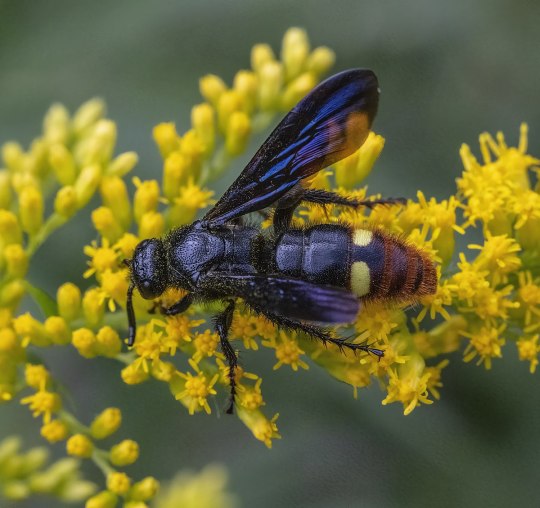
These babes usually hang out in the dog fennel near my yard, and I think they’re very pretty wasps. Their wings are an iridescent blue (hence the name), and their yellow spots are quite cute. They're also relatively chill, so you can stand pretty close to them and they wouldn’t care.
2. Common Paper Wasp

They’re everywhere, but I’d be lying if I said they weren’t pretty either. I think that they have a really neat color palette and super cool pattern to them. I’ve had personal experience with them, and I’ve always made sure that when I went on my balcony, that I didn’t present as a threat to them. Overall, I enjoyed sitting with these pretty critters.
3. Giant Leopard Moth

They look like snow leopards! Ironically enough, similar to how snow leopards are closely related to tigers, leopard moths are closely related to tiger moths (in fact, they’re in the same family). I raised one of these guys. His name was Napoleon, and he was the fanciest little guy 🩵.
4. Amber Snail

It’s usually stated online that amber snails are a pretty rare species. So I think it was pretty neat how I once found five or six on my mom’s calla lilies. They’re very tiny and very adorable, ‘nuff said.
5. Golden Sill Orb Weaver

A huge species of orb weaver that I think is absolutely gorgeous. These gals can get big, and I mean BIG. But no matter the size, it’s always a treat to see them during walks into the woods.
6. Agapostemon Sweat Bee

Agapostemon is actually just a genus of sweat bee, and I’ve personally come across at least two species. All I really need to say about these guys is that they’re metallic green bees, and the ones that live near my house are surprisingly mega chill (I still wouldn’t hold one tho lol).
7. Bee Fly

Maybe not as cute as their Japanese relatives, but they’re still whimsical little fairy creatures that I would absolutely pet in a heartbeat (if given the chance).
8. Flatback Millipede

I just wanted to bring up how metal I think these guys are. 10/10, absolutely fire little guys 🔥🔥🔥.
9. Eastern Pondhawk

They’re everywhere in the local pond and I love them. They’re one of my favorite examples of dimorphism because of how cool the females look (they’re the green ones). But sometimes it can be hard to distinguish a male and a female because younger males are more green. Still, they’re cool bugs.
10. Violet Dancer
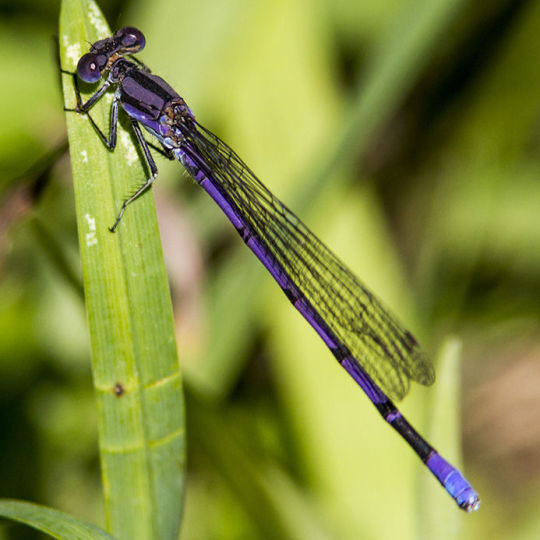
In my opinion, one of the prettiest species of damselflies. I’ve encountered one of these before (at a swamp). They’re just as vibrant as in the pictures 💜.
11. Ebony Jewelwing

Another beautiful damselfly! This time, on a larger scale. These can also be found in swamps, and their metallic green color is super cool.
12. Swallowtails (Just in General)
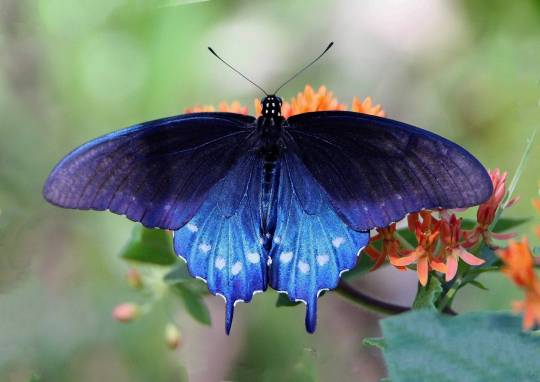
(Pipevine Swallowtail in the picture)
Swallowtails are my state’s official butterfly, and the reason for that is pretty simple: They’re literally everywhere. The most common is the Eastern Tiger, but there are other species, such as: The Black Swallowtail, Zebra Swallowtail, Pipevine Swallowtail, and probably even more. Another neat thing about them is that they’re in the same family as the world’s largest butterfly species: The Queen Alexandra’s Birdwing. So there’s some fun lil trivia for ya 👍.
13. Golden Northern Bumblebee

They’re very friend-shaped, and also very big. In fact, some of them can get bigger than carpenter bees. They don’t visit very often, but I really like them.
14. Variegated Fritillary

A very close relative of the gulf fritillary. In fact, I found caterpillars of both species eating passion vine together.

You can usually tell them apart pretty easily since Variegated caterpillars are lined with white dots. Also, fun fact: Their spines are non-stinging and completely harmless in general.
15. Larger Elm Leaf Beetle

Super friend-shaped, and extremely lightweight (you will barely feel them on your hand). They're pretty easy to handle since they’re very docile. But they’re considered pests to certain plants, so they’re not very liked by gardeners.
16. Golden Tortoise Beetle

Also friend-shaped, but very tiny and super skittish. One really interesting thing about them is that their larvae use their own feces as a shield. So, yeah, that’s a thing that they do.
17. Imperial Moth

A close relative of the Luna Moth (they’re in the same family). They might not be the most extravagant moths, but they have a rustic charm to them, and they remind me of bananas. Also, they’re fluffy, so they’re automatically cute.
18. Pink-Striped Oakworm Moth
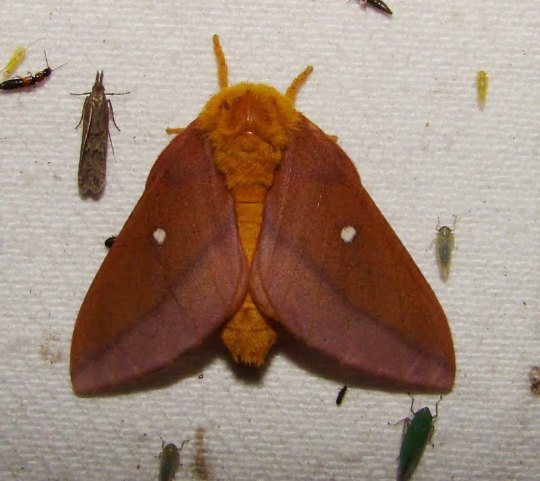
A much smaller relative of the Luna Moth (also in the same family). These babes are nocturnal and absolutely adorable.
19. Antlion

Despite being shaped like a damselfly, these fellas are more closely related to lacewings and mantidflies. You may recognize their name, and that’s because the most notable thing about antlions is their larvae (also called “doodlebugs”).
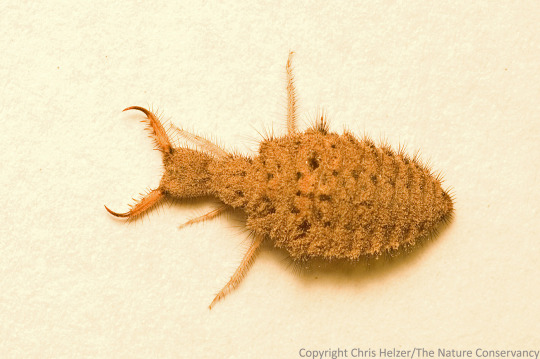
Y’know, these silly lil guys. The ones that make pit traps to eat their favorite food: Ants. They're funky. I love them.
20. Spring Fishfly

I just think they’re cool. They come from water.
21. Woolly Apple Aphid
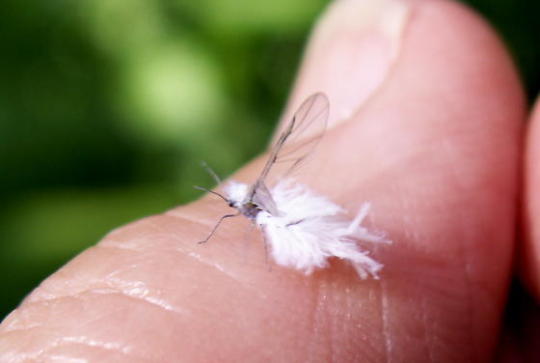
Adorable, fluffy, whimsical fairy creatures. I had the pleasure of holding one once. You can’t even feel them on your finger.
22. Red Velvet Ant/ Cow Killer

Despite her name, she’s not actually an ant. She’s a type of wasp in the family Mutilidae, where females are wingless. These wasps (specifically the males) are called “cow killers” because of a myth that said their stings were so powerful, they could kill a cow. This isn’t true tho.
23. Crane Fly

They look like giant mosquitoes, but fear not! They won’t hurt you! In fact, one of their nicknames is “mosquito eater.” But they don’t actually eat mosquitoes. At least, the adults don’t. They don’t even have the proper mouthparts to do that. Instead, Crane Flies feed on nectar, which makes them minor pollinators. So while they can get everywhere once they spawn, they’re not actually that big of a problem. And they’re super frail, so please be gentle if you want to hold them🤎.
24. Two-Spotted Longhorn Bee
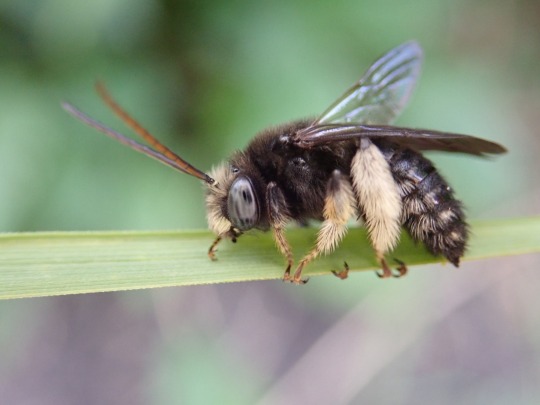
Absolutely adorable! They don’t visit very often, but when they do, they like to visit the sage in the garden. I usually find them frequently the same plants as the Leafcutter bees.
25. Giant Water Bug
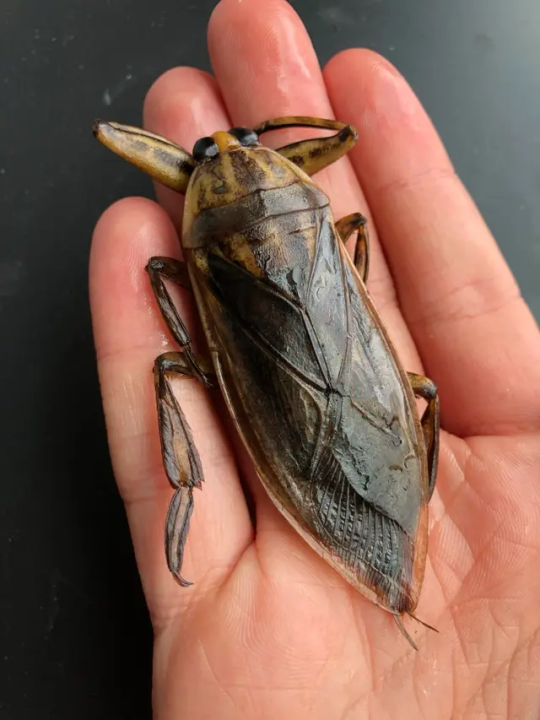
One of the coolest dudes ever. You’ll always find them anywhere wet, but please know that they can get BIG. They won’t charge after you, but they will bite if they feel threatened, and it will hurt. I’ve encountered these funky guys before, and I just admire them from a good distance.
26. Promachus Robber Flies

Promachus is also just a genus of robber fly (I don’t know how many species live in my state tho). I just think they look cool. And they’re good for pest control 👍.
27. Common Checkered Skipper

Cute little babies that are slightly blue. I have one in my bug collection.
28. Long-Tailed Skipper

Another cute little baby. And also blue! These things are pretty common in the garden, and I’m always happy to see them.
Reached the image count limit. I’ll post the second part in a bit.
#bugs#bugblr#bug appreciation#butterflies#beetles#moths#millipedes#orb weavers#damselflies#dragonflies#crane flies#bees#wasps#antlions#water bugs#aphids
9 notes
·
View notes
Text
last life symbols! the third lifers are here, the top three are here (and here), and the losers are here.
mumbo is a whiskered screech owl. i wanted all the southlanders as animals with good eyesight, and owls fit that. i chose them for mumbo because they kind of remind me of ghasts. somehow.
skizz is a white winged dove. again, i want skizz to always be a dove. i chose this one bc the vibes of the name.
impulse is a golden-ringed dragonfly. dragonflies have pretty good eyes, and this one matched his color scheme perfectly.
lizzie is a pipevine swallowtail. i had to make her a butterfly because fairy fort, and this had the best colors.
bdubs is a black rat. i want him as a mouse because 'tick tock, tick tock, the mouse ran up the clock'. but i chose a rat for this game because of his behavior.
tango is a bengal tiger. they are very aggressive, also he just. makes a good tiger.
bigb is a monarch butterfly. pretty and innocent looking, but they're actually toxic. butterflies can represent a lost loved one coming back, which in this context would be negative. also i think the colors look nice together.
scar is a mangrove pit viper. he's a snake oil salesman, and i chose this species because they can be purple.
cleo is a tarantula hawk wasp. very dangerous, and the colors fit her.
pearl is a luna moth. i can't make pearl anything other than a moth. luna, the moon, partnered with the stars.
grian is a eurasian sparrowhawk. grian is another one i want to keep kind of consistent, as birds. hawks are known for their good eyesight, and i chose this species for the vibes.
etho is a canada lynx. lynx are solitary animals, which i think fits etho. these ones live in the snow, like he did. also, he's canadian.
joel is a brown hyena. hyenas represent sorcery, evil, and trickery, which basically sums up last life joel. no real reason for brown hyenas, just the vibes.
once again, lmk if you have any other ideas!
#thank you to the trust life discord for help with tango and etho#actually they just said they were wet cats and i took it from there#but still#traffic smp#trafficblr#life series#life smp#last life smp#last life#llsmp#ll smp#mumbo jumbo#skizzleman#impulsesv#ldshadowlady#bdoubleo100#tangotek#bigbstatz#goodtimewithscar#zombiecleo#pearlescentmoon#grian#ethoslab#smallishbeans#mcytblr#mcyt#mcyt traffic signs#zdae thinks
33 notes
·
View notes
Text
Animal Hybrid AU
Shu - Brown bear
Reiji - Tiger
Ayato - Wolf
Kanato - Scorpion
Laito - Red grizzly
Subaru - Rabbit
Ruki - Sheep
Yuma - Red panda
Kou - Cat
Azusa - Butterfly
Bear Shu really loves hugs but sometimes he hugs you too tightly forgetting how strong he is. In terms of protection, he would just stare at whoever would try to hurt you.
Tiger Reiji enjoys being alone yet also doesn’t mind your presence especially if you’re not nagging him, if you do he won’t hesitate to use his claws. He wouldn’t care less if you got attacked unless you have a strong bond with him.
Wolf Ayato might seem dangerous at first but once you bond with him it won’t be a problem anymore because he’ll use his strenght to protect you. Keep in mind that he might bite.
Small yet poisonous scorpion Kanato will use his appearance to lure in his target then use the tip of his tail to inject poison so you can stay with him. He wouldn’t need to protect you because everyone are scared of him.
Bear Laito isn’t as calm as Shu, he will suffocate you with his presence and strenght on purpose just to enjoy himself. He will use bigger amount of strenght on anyone who has vicious intentions towards you.
Rabbit Subaru doesn’t like it when you’re away from him so he will give every bit of his attention until the wolf comes around. He might seem like he can’t offer much to protect you but his bites can cause bleeding, if nobody will cut his claws they might be useful too.
Sheep Ruki wouldn’t give you his attention so easily but once you gain his trust he will let you pet him, not only his head but anywhere you like. He’d just want your touch to never end. Protection? Oh please... He stares menacingly at people he doesn’t like.
This red panda has specific way of being... He always tries to find a way to scare you but in the end he always looks cute with those big ears. His signature red panda pose might not scare you but it does scare other hybrids so that’s how he decided to protect you.
Sassy cat Kou, he wants your attention but starts to ignore you if it’s not good enough. Always jealous of other hybrids whenever you’re around them, instead of using his claws on them he would use them on you to put you in your place. When he has to protect you from someone else he won’t stop on one scratch, he needs your enemies to bleed severely.
As a pipevine swallowtail species of butterfly Azusa can’t touch you while driven by emotions, the toxins he gained while being a catepillar by feeding on pipevines get released when his pulse gets too high. So he would rather to stay away from you while being nervous and hug you when he’s actually calm. He hates his poison but is glad to use it on anyone who would threaten your life.
#Diabolik Lovers#shu sakamaki#reiji sakamaki#ayato sakamaki#kanato sakamaki#laito sakamaki#subaru sakamaki#ruki mukami#yuma mukami#kou mukami#azusa mukami
13 notes
·
View notes
Text
Look at this fucking clipboard. It's a masterpiece

Background: I work at a summer camp. I like painting clipboards for this summer camp. I accidentally bought thirty clipboards.
So I decided to paint clipboards for all of the area directors, the office staff, my staff, and myself!! Seventeen total clipboards. And here's the first!
This one is for my best friend. His fav color is royal purple and he also loves any shade of blue. So I went for a purple butterfly bush with a butterfly loosely based off of a pipevine swallowtail. You can't tell from the picture but the black paint is metallic finish, and the blue on the butterfly is blue/purple metallic shift, which looks hella cool in the light.
#camp clipboards#might make this a series#i did the math and i have three days oer clipboard to finish them all#this one took at least five. but that was when i wasnt considering the deadline#whatever im just having fun#im so so prpud of that butterfly#you cant tell how amazing it is from the picture#the metallic finish of it l. how nicely the white pops#god its beautiful#okay onto the next
2 notes
·
View notes
Text
The Pipevine Swallowtail is a Beautiful Spring Butterfly
The Pipevine Swallowtail is a Beautiful Spring Butterfly features one of Florida’s prettiest butterflies. It also shares some basic facts about them including range, preferred foods, and behavior.
Nectaring Pipevine Swallowtail
One of our prettiest butterflies, in my opinion, is the pipevine swallowtail (Battus philenor). I just love the vibrant blue bodies and hind wings of the males. The females are quite attractive, too, but are a little more muted in their coloration. They tend to be one of the first butterflies to emerge in the spring, and they will continue to fly throughout most of…

View On WordPress
#beautiful butterflies#beautiful swallowtail butterflies#blue swallowtail#butterflies#butterfly photographs#butterfly photography#colorful butterflies#colorful swallowtail butterflies#Florida butterflies#Florida swallowtail butterflies#Florida swallowtails#photography#pipevine swallowtail#pipevine swallowtail butterfly#spring butterflies#springtime swallowtails#swallowtail butterflies#swallowtails
0 notes
Photo
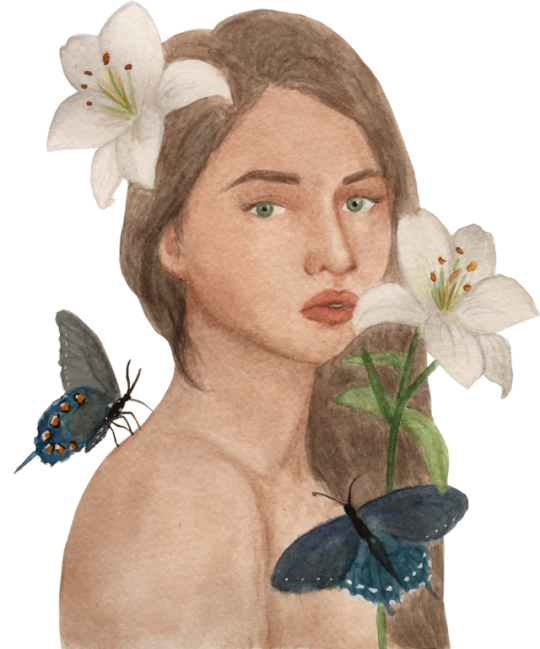
Lost Lily, 2017.
#my art#watercolor#portrait#aquarelle#the flowers r both white lilies n both butterflies r pipevine swallowtails#ok let me live with the dramatic painting name its a lesbiam who has 2 butterflies n 2 lilies do yall think she rly isnt lost or what now#anyways i reeeally loved the sketch n plan for this but it didnt turn out quite as i wanted it but im still happy with it!!#ok im gonna post it pls validate me but like its fine u know yeah bye#also its like#2000x2500 pixels? maybe? idk n its transparent woop woop
4 notes
·
View notes
Note
Ok so I'm the anon that wanted to draw faery sorb and gel, (maybe call me 🦋🌈 anon?) I think I'm going with the lo moth(gel) and pipevine swallowtail butterfly (sorb)
I also have a proposition 👁👁
I know these are for the monster au but maybe we could do a whole moth au la squadra (if no one has done that yet)that features them in that au story line?
Also maybe some moth tiz and squalo 👉👈?
Im really calling myself out as a simp huh
(Sorry for rambling I just really love that au and want to draw :3)
I believe fronomeeps (Im too scared to @ them lol I’m shy) has a bug LS AU where Risotto is a moth, and some other yandere author has a moth Bruno AU but other than that I don’t believe there is one!! That being said while I love almost all of the VA antagonists, this is mainly a La Squadra Simp blog. I may make an exception for Tiz and Squalo tho bc they’re just sexy af
I’ll get started on a moth AU when I’m done writing the monster boy descriptions ;) also don’t apologize for rambling!! I saw your other ask and I’m excited to see them too!!!
Anyway, bug catcher reader in moth AU that’s all
8 notes
·
View notes
Text

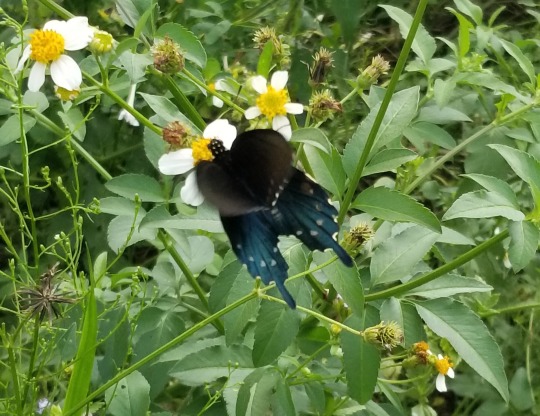

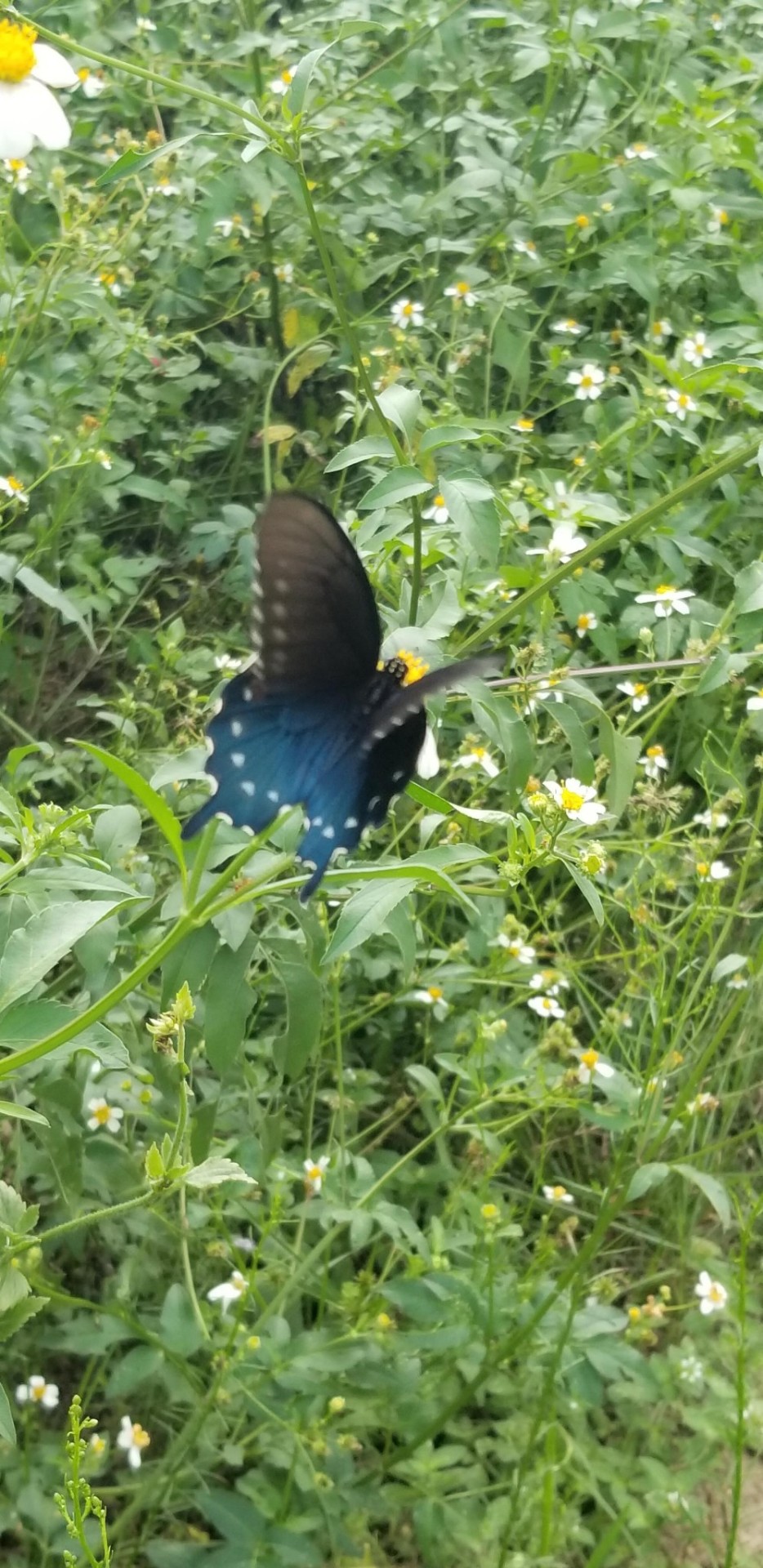
Got some pics of a butterfly thats kindof rare nowadays! It's a Pipevine Swallowtail! Also sorry for the blurry pic, those butterflies love to keep moving for some reason smh.
5 notes
·
View notes
Photo


I was curious how Swallowtail (Adrien with the butterfly miraculous) would look with blond hair. I thought it would work, since he has gold trim (instead of silver… I thought about it but it seemed like his look would be too cold with silver) and the yellow spots on the back of his wings. That was inspired by the pipevine swallowtail butterfly (the butterfly Mikau linked in the chapter)’s wings, by the way, though I put them on the top part of the wing instead of the bottom.
Since Mikau described his little ear hoops as being silver, I’m guessing she imagined the metal trim on the boots and hat to be silver, too. (Is that right @mikauzoran?) He would look good with black leather and silver fittings instead of brown and gold. Still, I sort of liked the touch of warm color in his costume instead of being all silver and blue. ^_^;; Not that there’s anything wrong with silver and blue.
Anyway, I sort of like this version with the blond hair. I love Adrien’s blond hair. :P
–
Again, this is (a deviation of) Swallowtail from @mikauzoran‘s A Little Night Music (Eine Kleine Nachtmusik), making his appearance in Chapter Twelve: Lost Woods. The original had black hair, which I’ve rendered here. @pawsomelybuggy also drew a lovely rendition here (with silver trim ^_~).
#Adrien Agreste#Swallowtail#Mikauverse#Art#Illustration#Miraculous Ladybug#Miraculous Ladybug Fanart#Butterfly Miraculous#Springtime in Wonderland#A Little Night Music (Eine Kleine Nachtmusik)#Mikau's Writings#Mireille's Art
39 notes
·
View notes
Text

Enchanted Blossoms
Weekly Oracle Card Spread.
✨ 1). Dreams (Royal Fern & Large Grass Yellow Butterfly).
Fern is about 400 million years old. It has a multitude of purposes medical, spiritual and even for clothing. I know it to be an amazing auric purifier. Fern comes to us and asks us what action do we have to take in order to further our dreams today. Some of us are always moving, others may feel stuck. Regardless of where you fall, I think the message is to do what’s uncomfortable or DIFFERENT!
✨ 2). Endurance (Cactus & Pipevine Swallowtail).
Cactus are fascinating. They store water, they can bloom beautiful flowers in some of the harshest conditions & some can be used as medicine for shamanic journey. Going through a shamanic journey requires endurance, once in that state there is no turning back. It’s quite an experience. Cactus is asking us to steel our resolve, thicken our skin & know that although things may get rocky, all is serving our growth. Everything has its season.
✨ 3). Friendship (Freesia & Green-Veined Charaxes). Freesias are incredibly fragrant. The card itself speaks of beautiful, poignant relationships to others and a reminder that we should energize one another. Maybe instead of the friends who are passive, you should use your energy to be friends with those who hold space for you, themselves and any collective goals. Also ask yourself how we could be better friends. Are we thinking about someone and not following that intuitive prompt to text or just let them know you’re thinking of them? I think this is your opportunity to really join forces and create beautiful, fragrant friendships rooted in love & mutual respect.
✨ 4). Faith( Passion Flower & Gulf Fritillary). Straight out the gate this vine is a powerful symbol of Gods & Prophets. It’s reminder that you are your ultimate source but you have a team to rely on. Sometimes faith is the only thing we have to run off of. It’s sometimes the only thing that ignites passion & perseverance. Use your voice to connect to yourself more deeply, your soul tribe & even your spirit team.
🔮Overall things are moving & shaking. It’s going to require a change or sacrifice to your routine of level of comfort. This is true for me, so I know it’ll resonate with others in some way shape or form.
🔮This spread tells us that dreaming big, putting our time, love and energy into people who reciprocate will benefit us greatly. Keeping a thick skin and being persistent will go a long way and developing that sense of “no matter what everything will be ok”.
🔮This was like so personal for me. I felt all of these things this week and it’s just a reminder to continue. Be imaginative, be seen, allow yourself to be seen and have faith that the right people will recognize the blessing that you are.
Xx The Renaissance Mystic
#psychic#spiritual guide#spiritualpath#therenaissancemystic#witches#witchtober#oracle reading#oraclecards#flowers#butterflies#spiritanimal#flowermagic
1 note
·
View note
Text
Nature Coast Butterfly Season is Back
Butterfly season is upon us! I absolutely love September’s fluttering wings, with pairs of dancing Lepidoptera all around. Butterflies are very common on Florida's Nature Coast, with nearly 200 species living in or traveling through the Sunshine State.
In fact, we have our own subspecies of the famed Monarch butterfly right here in Florida - and Dade City is having its first Monarch Butterfly Festival October 12 in the Hibiscus Park downtown.
According to University of Florida’s IFAS, over 180 verified butterfly species are in the Sunshine State, representing some 170 native or newly established species and 17 tropical vagrants.
Within that mix, around 40 are considered either unique to the state or occur mostly within its boundaries. This diverse butterfly fauna is the highest of any state east of the Mississippi River and helps make Florida a premier location for butterfly gardeners.
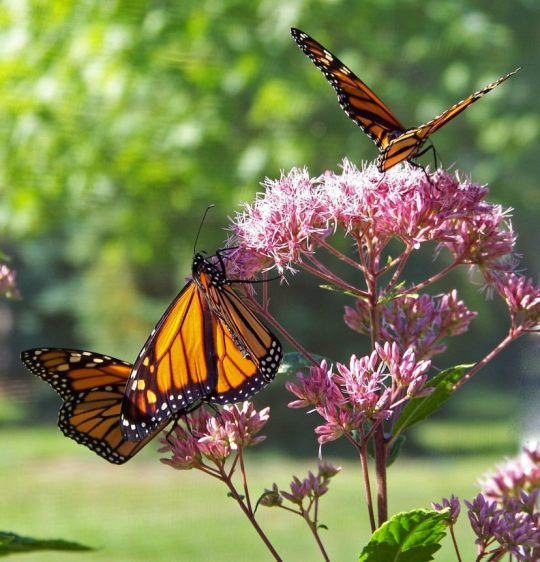
Monarch butterflies on native plants.
Worry about the Declining Monarch Butterfly Population
There is some real concern in the Eco world that Monarch butterflies are significantly declining. Here is an article by Halle Marchese and Natalie van Hoose that summarized a 37-year study of the Monarch in Florida, showing its population is down about 80% since 2005!
The study suggests that the loss of Florida's milkweed plants, a significant food and breeding plant for the Monarch, has severely affected both caterpillar and butterfly populations.

Image courtesy of Pat Manfredo
Butterfly Gardens on Florida's Nature Coast
Because of our diverse flora, the Nature Coast is a wonderful place to experience butterflies. In fact, there is a wonderful butterfly garden at the Nature Coast Botanical Gardens, 1489 Parker Avenue in Spring Hill. Ellie Schiller Homosassa Springs Wildlife State Park, 4150 S. Suncoast Boulevard in Homosassa also has a nice butterfly garden area as part of the park. Please add any other public butterfly gardens in the Nature Coast that you know of to the comments section of this article.


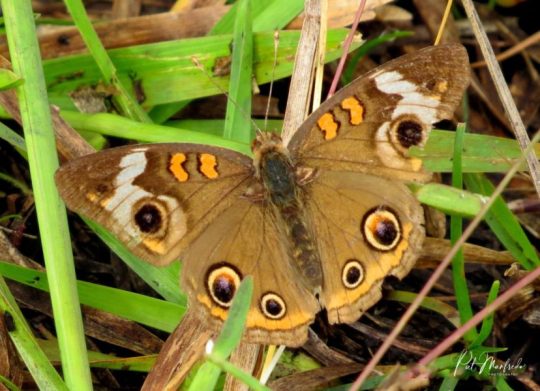


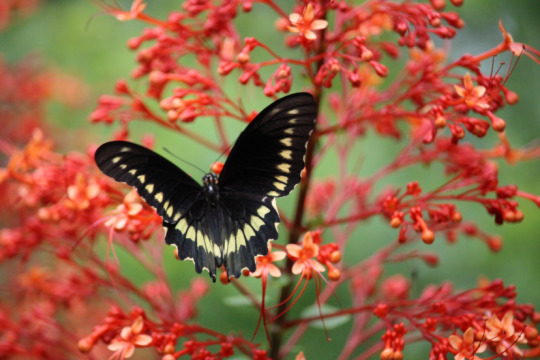
Image courtesy of Pat Manfredo
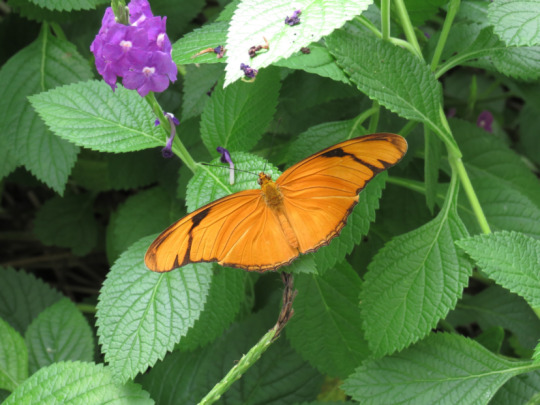
Image courtesy of Pat Manfredo
The Value of Butterflies
Butterflies are important to our ecosystems, as valuable pollinators for our plants, including agricultural crops. They come in a huge variety of sizes, shapes and colors, and are attracted to various flowers and flowering plants that often fit the butterfly’s size.
Butterflies are important fodder for birds, bats, lizards, spiders and other creatures in the food chain.
These colorful, winged marvels consume weedy plants and are good indicators of a healthy ecosystem.
Some butterflies such as the Monarch and Pipevine Swallowtail eat poisonous plants as caterpillars and are actually poisonous as adult butterflies. Birds learn not to eat them! Other tasty butterflies (called "mimics") come to resemble them and thus are overlooked by hungry predators.
And they add immeasurable beauty to our environment, which is great for our mental and spiritual health. Butterflies have inspired poets, painters and photographers for many, many years.

Image courtesy of Pat Manfredo
Ode to a Butterfly
by Sheri Walters
Butterfly, oh butterfly, why do you hide in the shadows?
Spread wide your wings, let your heart sing
And come dance with me in the meadow
Butterfly, oh butterfly, why do you fear?
You'll never stray, I'll lead the way
Just follow the path, I'll be near
Butterfly, oh butterfly, have you no hope?
Drink of the sun, our life's just begun
Thro time's hills and valleys we'll lope
Butterfly, oh butterfly, dare you to dream?
On our hearts we depend, shall we follow the wind
And consign to the fates grander scheme?
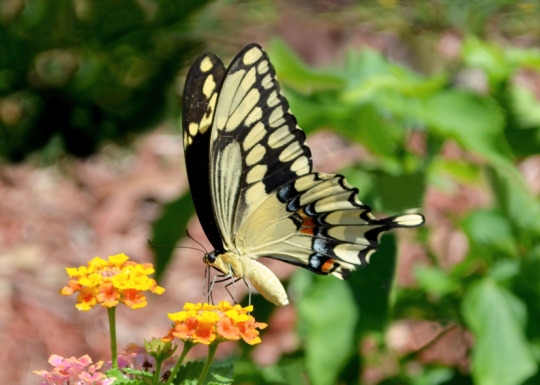
Giant Swallowtail butterflies reach average wingspan of 4 -6 ½ inches. Image courtesy of Ralph Bischoff.

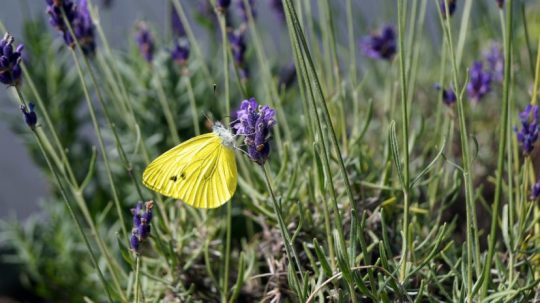

Zebra Swallowtail butterfly image by Ralph Bischoff.

What is the difference between butterflies and moths? Image courtesy of Ralph Bischoff
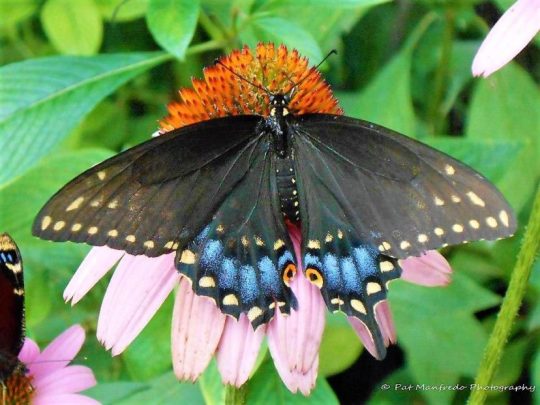
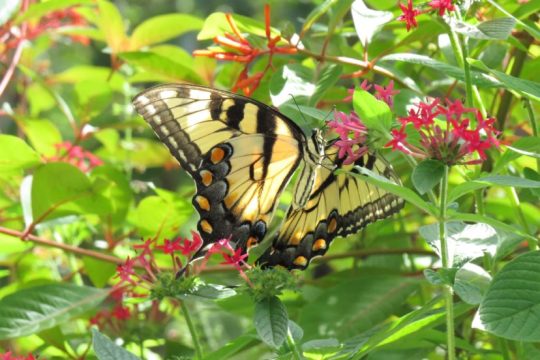
Official State Butterfly of Florida
The zebra longwing butterfly is found throughout Florida in hardwood hammocks, thickets, gardens, and particularly in the Everglades National Park. The zebra longwing butterfly is characterized by long black wings with distinctive thin stripes and a slow, graceful flight. Some have white stripes and some have yellowish stripes.

Zebra longwing is the Florida state butterfly. Image courtesy of Pat Manfredo.
The adults are unusual among butterflies in that they eat pollen as well as sip nectar. This ability contributes to their longevity—they can live up to 3 months as adults in the wild.

Image courtesy of Pat Manfredo
Attracting Butterflies with a Butterfly Garden
If you aren’t seeing many butterflies around your area, you can do something about it - plant a butterfly garden! It’s really pretty easy. Just add the plants that attract the butterflies you want to commune with.
Components of a successful butterfly garden include adult nectar sources to attract and nourish adult butterflies and larval host plants to attract female butterflies laying eggs as well as serve as a food source for the developing larvae. You will want to add some shelter for your plants to provide protection from temperature extremes, storms, and predators, some locations for your butterflies to rest, and a water source, such as a fountain to provide easy, consistent access to water for drinking and regulating their body temperatures.
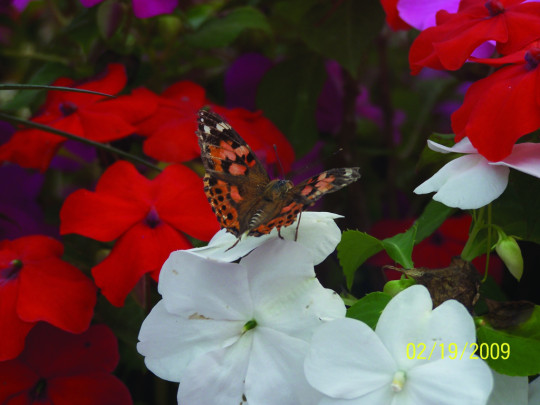
Start a butterfly garden with the help of one of our local Master Gardener programs.
If this seems overwhelming to you, contact your local Master Gardener organization.
Meanwhile, this helpful table by Marguerite Klem gives Nature Coast readers a variety of butterfly species and the plants they prefer.
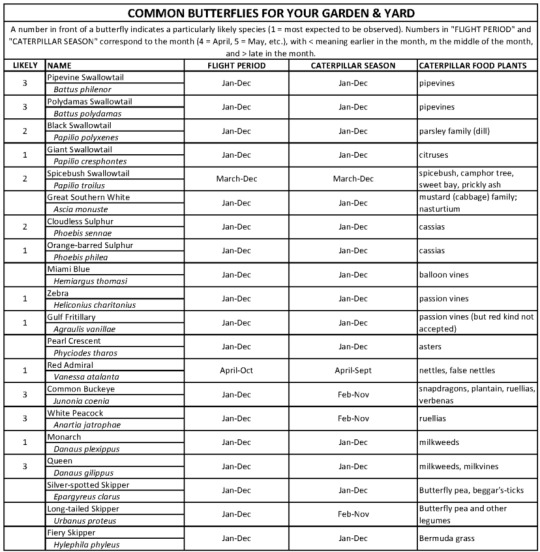
For gardeners thinking of adding butterfly plants to their landscapes, it's important to note that both caterpillar host plants and nectar plants for adults should be planted to maximize butterfly populations.
Some good plants for hosting butterflies on Florida's Nature Coast include Black-Eyed Susan, Bottlebrush, Butterfly Bush, Calico Flower, Cassia, Coral Bean, Coral Honeysuckle, Dill, Fennel, Firebush, Firecracker Plant, Firespike, Gumbo-Limbo Tree, Jatropha, Lantana, Lion's Ear, Milkweed, Parsley, Passion Flower, Pawpaw, Purple Coneflower, and Saltbush.

Image courtesy of Pat Manfredo
Viewing Butterflies without a Garden
The different species of Lepidoptera enjoy different ecosystems, so if you go for a walk in the woods, you will see different butterflies than if you view them in a field or on the beach. It can be fun to try and identify which butterflies you see in which environment. Tom Murray took the time to photograph and make a web page of Florida Butterflies. You can find it here.
They are not all there, but there are many. Also there is a book by University of Florida IFAS, Florida Butterfly Encounters that may be helpful. It can be found here.
While it is still hot outside this time of year, getting out early and enjoying a quick walk or a quiet time sipping your favorite beverage in the shade offers the opportunity to see some of Florida's finest butterflies - and help your spirit soar and dance with their colorful, winged whimsy.
Butterfly Gardening in Florida by Jaret C. Daniels, Joe Schaefer, Craig N. Huegel, and Frank J. Mazzotti
Read the full article
#floridabutterflies#floridamonarchbutterfly#floridanature#lepidoptera#MonarchButterfly#naturecoastbutterflies#naturecoastbutterflygardens
0 notes
Note
HI IT'S SHIP-EATING ANON WITH V DIFFERENT HEADCANONS i got here because i looked at bodhi during a rewatch and went "omg poor baby he's a rat" btw (smart, dependent on social interaction, nervous, looks suspicious but is actually soft) (i love... rats...) also i swear none of these are actor jokes but there's a few that sound like actor jokes orz. lyra's is a pipevine swallowtail--they're poisonous butterflies, like the monarch but the coloration was better. 1/n
cassian ended up with a crow off cleverness and sneakiness, which is maybe uncharitable but welp. corvids are more social than they seem on first glance, too. mon mothma has a congo bay owl (they’re an endangered and barely-known barn owl subspecies). saw gerrera has a snapping turtle.
MEANWHILE, CANON-TYPICALLY, KRENNIC WAS A PAIN IN MY AND MY CO-CONSPIRATOR’S ASSES. i jumped to “probably mammal, medium-sized or small, not immediately threatening and possibly even laughable, will literally kill you” for the general class i meant but guess fcuking what all the surprise deadly animals are fucking australian
“no i don’t want people to be able to assume i didn’t put hours of thought into this, i don’t want it to look like a cheap reference-joke shitpost!!” i wailed. “the tasmanian devil is characterized by its extremely loud and disturbing screech,” the internet informed me. “welp,” i said. (i think that’s everyone??? the next struggle: FUCKING GENDER)
i’ve never liked the post-hoc common headcanon that people with daemons of the same binary gender as them are queer because of the resulting vanishing (and binary) extrapolatable rarity?? and someone on reddit made the point that our paltry canon information could as easily be read as people consigned to social liminality, which gave me so much more room to work: nontrivial overlap with queerness but not causative or exclusive, neato.
Ok, I’m posting this in three parts cause the world needs to see how incredible this entire thing is, but also needs to be able to read it.
LOOK AT THE DAEMON HEADCANONS Y’ALL
2 notes
·
View notes
Text
More native musings
Fossil records show ginkgo was once found on the land mass now called North America. Does that make it native?
I’m encouraged by Tony Avent’s recent piece on the native plant debate to address a couple of points, actually open-ended questions, that may inspire more thought on this volatile issue. My hope is that it leads to more collaboration on creating more wildlife habitat, surely a mutual goal with broad support.
Plant lush layers of mannerly plants that provide good habitat, native or not.
Let me attempt to fend off the usual character assassinations that are often the result of any appeal to reconsider the idea that only native plants are “good”. I love wild things, wild areas, and embrace the Gaia principle. Nothing in the world suits me as well as taking a long ramble through the wild areas near my home. I’ve done it since I was a little tomboy, when my mother’s only rule was that I had to be home by the time the automatic security light near the barn came on at dusk. It was also my mother’s guidance that taught me to look. She was an artist when she wasn’t running our farm and she taught me to appreciate the many shades of green, the play of light and shadow, and the patterns to be seen in bark, branches and the wings of birds and dragonflies.
Chinese abelia: a long-blooming, fragrant, low maintenance shrub that provides abundant nectar for our pollinators.
When I bought my 100 acres of rough, recently timbered (and thus cheap) land, someone asked me what I intended “to do” with such a large wild property. “Look at it while it grows,” was my answer…and so it continues, though these days my knees ache, my hip twinges, and I may have to stop and catch my breath partway up a steep slope. I will roam it as long as my legs will carry me.
In all weather but hard driving rain, I look at plants, birds, reptiles, amphibians, soil, sky, insects, mushrooms, spider webs, and changes in light. I wonder, and ponder, form questions, and make connections and have revelations. I read, and research and gain from others’ knowledge and thoughts. Slowly, happily, I learn.
So when I began to hear about Doug Tallamy’s assertions that insects had to have native plants to eat, or our birds would die and so on up the food chain, I was puzzled. I saw many insects eating the foliage of non-native plants – in the wild, on the neighboring farms, in my yard, and on the plants in our display gardens at work. Many of the questions I had fielded as a horticulturist dealt with recommendations on how to deal with insects eating people’s plants, most of them, especially in the edible realm, non-native. It seemed to me that numerous denizens of the natural world had made very good use of many introduced plants.
This monarch feeds readily on the lush balloon plant, a member of the milkweed family that happens to hail from Africa.
I also saw many natives that were untouched by insects. Anisetree comes to mind as I have often commented, that the attractive smell of the foliage must not translate to flavor because I have never seen any insect damage on the leaves. Does that make this native plant a “bad” landscape plant, though it provides cover, and anchors soil, as many plants do. Must every plant have foliage that offers insect sustenance? In the wild, that does not seem to be the case.
And, many nativists will make some allowance for those non-native plants that do produce foliage eaten by insects. Oh yes, they agreed, there are “generalist” insects that will chow down on some non-native plant foliage, but the “specialist” insects will not.
A prime example of a specialist insect is the monarch butterfly, a lovely poster child. Monarch caterpillars will feed only on plants in the milkweed family. This statement is 100% true. It does not, however, disclose that there are many members of the milkweed family, Asclepiadaceae, that are found on other continents and that serve beautifully as monarch caterpillar forage.
Fennel, not native, makes a fantastic food source for black swallowtail butterflies.
Each spring, we grow balloon plant Gomphocarpus physocarpus (from southern Africa) from seed for just that purpose. A perennial plant in Zone 8, we treat it as an easily grown annual, and sell it in our plant sales in inexpensive six-packs. Our shoppers have learned to value the tall fast-growing plant that provides enough generous willowy foliage to support numerous monarch caterpillars. We plant them in our display gardens here on the research center along with native milkweeds, several species close by, but these smaller perennial plants are susceptible to crippling infestations of aphids and the leaves are often insufficient to support more than a handful of the little munchers. Often I have carried the demonstrably hungry caterpillars in my hand to the billowing masses of balloon plant where they can continue their caterpillar phase with plenty to eat. If it were not for this “introduced exotic” we would not be nearly as successful at providing for the monarchs.
Another “crop” of monarchs raised on non-native plants as evidenced by this chrysalis ready to burst forth with winged glory.
It is of course, quite understandable that they make use of this plant. Anyone of reason understands that the continents we know now were not always distinct separated bodies of land; that many populations of plants, once divided by ocean’s rise, evolved to be only somewhat different. The human (somewhat admirable) need to establish some since of order and understanding created and imposed classifications of these plant families, enough sometimes to be classified as different genera or species, but essentially, at a molecular level, they are still the same plant once in the belly of the insect that could care less that it was not found on this continent…
Aristolochia fimbriata is a pipevine species native to south America, but these pipevine caterpillars don’t discriminate against those south of the border (like some do!)
…or was it, at one time? When I bring up the concept of native to my woody plant classes, I like to pose this question. We know from fossil record that dawn redwood Metasequoia glyptostroboides and ginkgo Ginkgo biloba were once found on the land mass we now call North America, but were wiped out by ice ages. Now that we can purchase these plants in nurseries and plant them successfully in our landscapes, are we bringing back a native, or are we introducing an exotic?
When you plant a dawn redwood, are you restoring a lost native?
If one were to say it is an exotic because it wasn’t on this continent when “we arrived”, I can only raise my eyebrows at the arrogance. Who are we to choose that tiny speck of time, legitimized only because it happened to be the plant palette that was here when the first European set boot on the continent? That move introduced the most invasive species ever, the European settler. Who among us will volunteer to clear out, along with kith and kin and return this land to the “natives” (the human species, who by the way, crossed over on Berengia, the Siberian “land bridge” from Asia).
Native is a moving target. Look at what might happen if we pass laws that dictate that we plant only natives and that mandate removal of all non-natives. Where do we draw the line? Is my grandmother’s gardenia contraband? The daffodil bulbs from my other grandmother? Will I be required to rip out my small orchard of apples, pears and figs? Are edibles exempt? What about the crabapples that serve as great pollinators for my apples?
I say we’d do better to bond over using plants that create good habitat, minimize pesticide use, and conserve water and soil. I’m on the Tony team.
Of course, plant some, many, a lot of great natives as well, like this Henry Eilers rudbeckia.
More native musings originally appeared on GardenRant on February 28, 2019.
from GardenRant https://www.gardenrant.com/2019/02/more-native-musings.html
0 notes
Text
More native musings
Fossil records show ginkgo was once found on the land mass now called North America. Does that make it native?
I’m encouraged by Tony Avent’s recent piece on the native plant debate to address a couple of points, actually open-ended questions, that may inspire more thought on this volatile issue. My hope is that it leads to more collaboration on creating more wildlife habitat, surely a mutual goal with broad support.
Plant lush layers of mannerly plants that provide good habitat, native or not.
Let me attempt to fend off the usual character assassinations that are often the result of any appeal to reconsider the idea that only native plants are “good”. I love wild things, wild areas, and embrace the Gaia principle. Nothing in the world suits me as well as taking a long ramble through the wild areas near my home. I’ve done it since I was a little tomboy, when my mother’s only rule was that I had to be home by the time the automatic security light near the barn came on at dusk. It was also my mother’s guidance that taught me to look. She was an artist when she wasn’t running our farm and she taught me to appreciate the many shades of green, the play of light and shadow, and the patterns to be seen in bark, branches and the wings of birds and dragonflies.
Chinese abelia: a long-blooming, fragrant, low maintenance shrub that provides abundant nectar for our pollinators.
When I bought my 100 acres of rough, recently timbered (and thus cheap) land, someone asked me what I intended “to do” with such a large wild property. “Look at it while it grows,” was my answer…and so it continues, though these days my knees ache, my hip twinges, and I may have to stop and catch my breath partway up a steep slope. I will roam it as long as my legs will carry me.
In all weather but hard driving rain, I look at plants, birds, reptiles, amphibians, soil, sky, insects, mushrooms, spider webs, and changes in light. I wonder, and ponder, form questions, and make connections and have revelations. I read, and research and gain from others’ knowledge and thoughts. Slowly, happily, I learn.
So when I began to hear about Doug Tallamy’s assertions that insects had to have native plants to eat, or our birds would die and so on up the food chain, I was puzzled. I saw many insects eating the foliage of non-native plants – in the wild, on the neighboring farms, in my yard, and on the plants in our display gardens at work. Many of the questions I had fielded as a horticulturist dealt with recommendations on how to deal with insects eating people’s plants, most of them, especially in the edible realm, non-native. It seemed to me that numerous denizens of the natural world had made very good use of many introduced plants.
This monarch feeds readily on the lush balloon plant, a member of the milkweed family that happens to hail from Africa.
I also saw many natives that were untouched by insects. Anisetree comes to mind as I have often commented, that the attractive smell of the foliage must not translate to flavor because I have never seen any insect damage on the leaves. Does that make this native plant a “bad” landscape plant, though it provides cover, and anchors soil, as many plants do. Must every plant have foliage that offers insect sustenance? In the wild, that does not seem to be the case.
And, many nativists will make some allowance for those non-native plants that do produce foliage eaten by insects. Oh yes, they agreed, there are “generalist” insects that will chow down on some non-native plant foliage, but the “specialist” insects will not.
A prime example of a specialist insect is the monarch butterfly, a lovely poster child. Monarch caterpillars will feed only on plants in the milkweed family. This statement is 100% true. It does not, however, disclose that there are many members of the milkweed family, Asclepiadaceae, that are found on other continents and that serve beautifully as monarch caterpillar forage.
Fennel, not native, makes a fantastic food source for black swallowtail butterflies.
Each spring, we grow balloon plant Gomphocarpus physocarpus (from southern Africa) from seed for just that purpose. A perennial plant in Zone 8, we treat it as an easily grown annual, and sell it in our plant sales in inexpensive six-packs. Our shoppers have learned to value the tall fast-growing plant that provides enough generous willowy foliage to support numerous monarch caterpillars. We plant them in our display gardens here on the research center along with native milkweeds, several species close by, but these smaller perennial plants are susceptible to crippling infestations of aphids and the leaves are often insufficient to support more than a handful of the little munchers. Often I have carried the demonstrably hungry caterpillars in my hand to the billowing masses of balloon plant where they can continue their caterpillar phase with plenty to eat. If it were not for this “introduced exotic” we would not be nearly as successful at providing for the monarchs.
Another “crop” of monarchs raised on non-native plants as evidenced by this chrysalis ready to burst forth with winged glory.
It is of course, quite understandable that they make use of this plant. Anyone of reason understands that the continents we know now were not always distinct separated bodies of land; that many populations of plants, once divided by ocean’s rise, evolved to be only somewhat different. The human (somewhat admirable) need to establish some since of order and understanding created and imposed classifications of these plant families, enough sometimes to be classified as different genera or species, but essentially, at a molecular level, they are still the same plant once in the belly of the insect that could care less that it was not found on this continent…
Aristolochia fimbriata is a pipevine species native to south America, but these pipevine caterpillars don’t discriminate against those south of the border (like some do!)
…or was it, at one time? When I bring up the concept of native to my woody plant classes, I like to pose this question. We know from fossil record that dawn redwood Metasequoia glyptostroboides and ginkgo Ginkgo biloba were once found on the land mass we now call North America, but were wiped out by ice ages. Now that we can purchase these plants in nurseries and plant them successfully in our landscapes, are we bringing back a native, or are we introducing an exotic?
When you plant a dawn redwood, are you restoring a lost native?
If one were to say it is an exotic because it wasn’t on this continent when “we arrived”, I can only raise my eyebrows at the arrogance. Who are we to choose that tiny speck of time, legitimized only because it happened to be the plant palette that was here when the first European set boot on the continent? That move introduced the most invasive species ever, the European settler. Who among us will volunteer to clear out, along with kith and kin and return this land to the “natives” (the human species, who by the way, crossed over on Berengia, the Siberian “land bridge” from Asia).
Native is a moving target. Look at what might happen if we pass laws that dictate that we plant only natives and that mandate removal of all non-natives. Where do we draw the line? Is my grandmother’s gardenia contraband? The daffodil bulbs from my other grandmother? Will I be required to rip out my small orchard of apples, pears and figs? Are edibles exempt? What about the crabapples that serve as great pollinators for my apples?
I say we’d do better to bond over using plants that create good habitat, minimize pesticide use, and conserve water and soil. I’m on the Tony team.
Of course, plant some, many, a lot of great natives as well, like this Henry Eilers rudbeckia.
More native musings originally appeared on GardenRant on February 28, 2019.
from Gardening https://www.gardenrant.com/2019/02/more-native-musings.html
via http://www.rssmix.com/
0 notes
Text
More native musings
Fossil records show ginkgo was once found on the land mass now called North America. Does that make it native?
I’m encouraged by Tony Avent’s recent piece on the native plant debate to address a couple of points, actually open-ended questions, that may inspire more thought on this volatile issue. My hope is that it leads to more collaboration on creating more wildlife habitat, surely a mutual goal with broad support.
Plant lush layers of mannerly plants that provide good habitat, native or not.
Let me attempt to fend off the usual character assassinations that are often the result of any appeal to reconsider the idea that only native plants are “good”. I love wild things, wild areas, and embrace the Gaia principle. Nothing in the world suits me as well as taking a long ramble through the wild areas near my home. I’ve done it since I was a little tomboy, when my mother’s only rule was that I had to be home by the time the automatic security light near the barn came on at dusk. It was also my mother’s guidance that taught me to look. She was an artist when she wasn’t running our farm and she taught me to appreciate the many shades of green, the play of light and shadow, and the patterns to be seen in bark, branches and the wings of birds and dragonflies.
Chinese abelia: a long-blooming, fragrant, low maintenance shrub that provides abundant nectar for our pollinators.
When I bought my 100 acres of rough, recently timbered (and thus cheap) land, someone asked me what I intended “to do” with such a large wild property. “Look at it while it grows,” was my answer…and so it continues, though these days my knees ache, my hip twinges, and I may have to stop and catch my breath partway up a steep slope. I will roam it as long as my legs will carry me.
In all weather but hard driving rain, I look at plants, birds, reptiles, amphibians, soil, sky, insects, mushrooms, spider webs, and changes in light. I wonder, and ponder, form questions, and make connections and have revelations. I read, and research and gain from others’ knowledge and thoughts. Slowly, happily, I learn.
So when I began to hear about Doug Tallamy’s assertions that insects had to have native plants to eat, or our birds would die and so on up the food chain, I was puzzled. I saw many insects eating the foliage of non-native plants – in the wild, on the neighboring farms, in my yard, and on the plants in our display gardens at work. Many of the questions I had fielded as a horticulturist dealt with recommendations on how to deal with insects eating people’s plants, most of them, especially in the edible realm, non-native. It seemed to me that numerous denizens of the natural world had made very good use of many introduced plants.
This monarch feeds readily on the lush balloon plant, a member of the milkweed family that happens to hail from Africa.
I also saw many natives that were untouched by insects. Anisetree comes to mind as I have often commented, that the attractive smell of the foliage must not translate to flavor because I have never seen any insect damage on the leaves. Does that make this native plant a “bad” landscape plant, though it provides cover, and anchors soil, as many plants do. Must every plant have foliage that offers insect sustenance? In the wild, that does not seem to be the case.
And, many nativists will make some allowance for those non-native plants that do produce foliage eaten by insects. Oh yes, they agreed, there are “generalist” insects that will chow down on some non-native plant foliage, but the “specialist” insects will not.
A prime example of a specialist insect is the monarch butterfly, a lovely poster child. Monarch caterpillars will feed only on plants in the milkweed family. This statement is 100% true. It does not, however, disclose that there are many members of the milkweed family, Asclepiadaceae, that are found on other continents and that serve beautifully as monarch caterpillar forage.
Fennel, not native, makes a fantastic food source for black swallowtail butterflies.
Each spring, we grow balloon plant Gomphocarpus physocarpus (from southern Africa) from seed for just that purpose. A perennial plant in Zone 8, we treat it as an easily grown annual, and sell it in our plant sales in inexpensive six-packs. Our shoppers have learned to value the tall fast-growing plant that provides enough generous willowy foliage to support numerous monarch caterpillars. We plant them in our display gardens here on the research center along with native milkweeds, several species close by, but these smaller perennial plants are susceptible to crippling infestations of aphids and the leaves are often insufficient to support more than a handful of the little munchers. Often I have carried the demonstrably hungry caterpillars in my hand to the billowing masses of balloon plant where they can continue their caterpillar phase with plenty to eat. If it were not for this “introduced exotic” we would not be nearly as successful at providing for the monarchs.
Another “crop” of monarchs raised on non-native plants as evidenced by this chrysalis ready to burst forth with winged glory.
It is of course, quite understandable that they make use of this plant. Anyone of reason understands that the continents we know now were not always distinct separated bodies of land; that many populations of plants, once divided by ocean’s rise, evolved to be only somewhat different. The human (somewhat admirable) need to establish some since of order and understanding created and imposed classifications of these plant families, enough sometimes to be classified as different genera or species, but essentially, at a molecular level, they are still the same plant once in the belly of the insect that could care less that it was not found on this continent…
Aristolochia fimbriata is a pipevine species native to south America, but these pipevine caterpillars don’t discriminate against those south of the border (like some do!)
…or was it, at one time? When I bring up the concept of native to my woody plant classes, I like to pose this question. We know from fossil record that dawn redwood Metasequoia glyptostroboides and ginkgo Ginkgo biloba were once found on the land mass we now call North America, but were wiped out by ice ages. Now that we can purchase these plants in nurseries and plant them successfully in our landscapes, are we bringing back a native, or are we introducing an exotic?
When you plant a dawn redwood, are you restoring a lost native?
If one were to say it is an exotic because it wasn’t on this continent when “we arrived”, I can only raise my eyebrows at the arrogance. Who are we to choose that tiny speck of time, legitimized only because it happened to be the plant palette that was here when the first European set boot on the continent? That move introduced the most invasive species ever, the European settler. Who among us will volunteer to clear out, along with kith and kin and return this land to the “natives” (the human species, who by the way, crossed over on Berengia, the Siberian “land bridge” from Asia).
Native is a moving target. Look at what might happen if we pass laws that dictate that we plant only natives and that mandate removal of all non-natives. Where do we draw the line? Is my grandmother’s gardenia contraband? The daffodil bulbs from my other grandmother? Will I be required to rip out my small orchard of apples, pears and figs? Are edibles exempt? What about the crabapples that serve as great pollinators for my apples?
I say we’d do better to bond over using plants that create good habitat, minimize pesticide use, and conserve water and soil. I’m on the Tony team.
Of course, plant some, many, a lot of great natives as well, like this Henry Eilers rudbeckia.
More native musings originally appeared on GardenRant on February 28, 2019.
from GardenRant https://ift.tt/2En1VJ9
0 notes